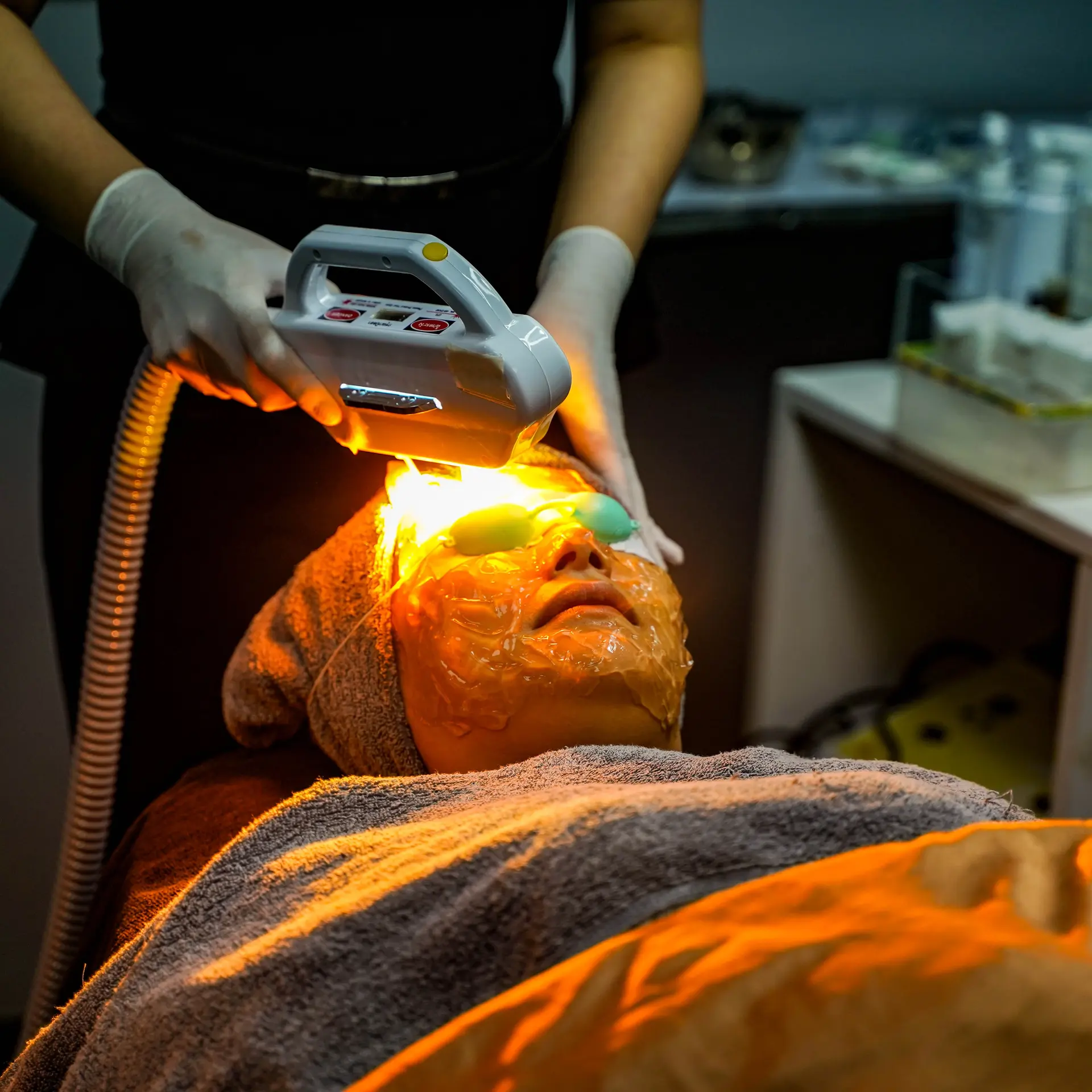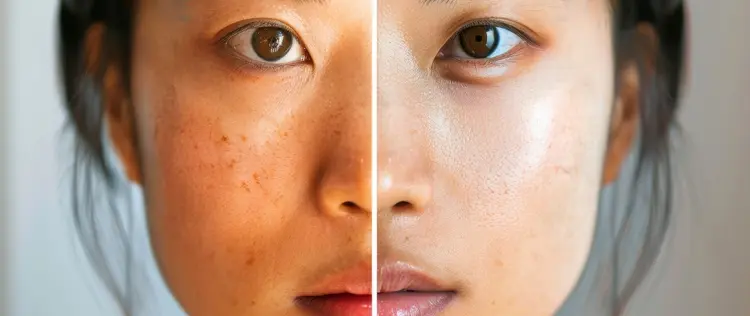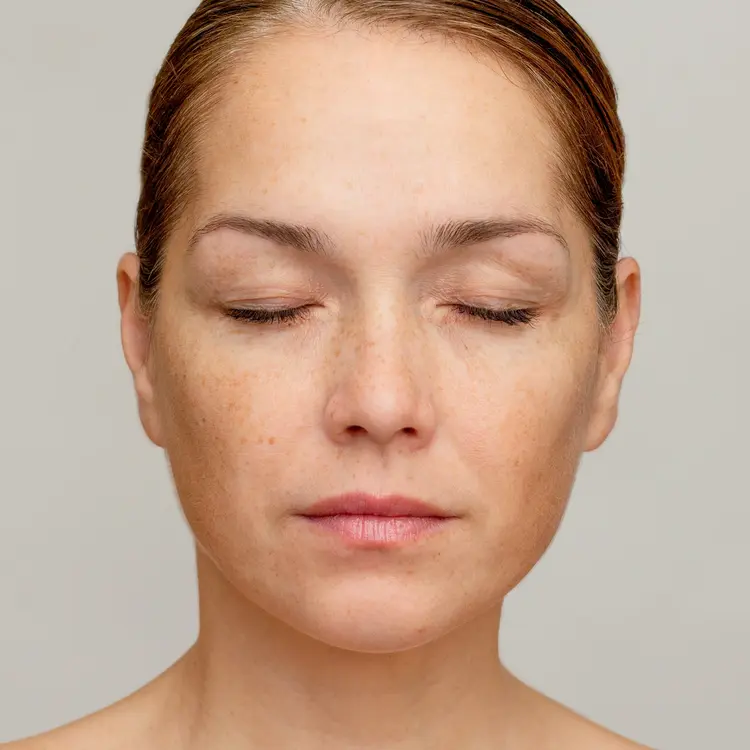A carbon dioxide laser or CO2 laser skin resurfacing treatment allows dermatologists to offer patients precise skin rejuvenation and healing options. A laser CO2 treatment can make you look and feel younger. It can also address medical skin problems that tend to be stubborn, such as warts or acne scarring.
Lasers have been instrumental in medicine for decades, and the CO2 laser was one of the first to appear on the market. Over the years, advancements have made these lasers more affordable, safer, and easier to use.
Numerous conditions respond well to laser CO2 treatment. The goal is to remove layers of skin and generate healing using a wavelength of light. This article will cover some of the benefits of laser CO2 treatments and their uses for the skin.
What Is a CO2 Laser?
A laser CO2 treatment uses the water inside your body to ablate or destroy the upper layers or epidermis of the skin. The water inside skin cells absorbs light. As it does, it produces enough heat to ablate the top skin layers. This is a process called laser skin resurfacing. At the same time, the laser CO2 treatment triggers the natural healing process and stimulates collagen growth.
You can further break CO2 lasers down into two distinct categories: ablative and fractional. An ablative laser has one beam of light that covers a large, continuous area. A fractional CO2 laser breaks that light up into microbeams. A CO2 fractional laser treatment minimizes the damage done to healthy skin by the laser by allowing for better targeting.

What Are the Benefits of a Laser CO2 Treatment?
CO2 laser therapy targets and treats many different skin conditions with beneficial results.
Acne Scars and Spots
The intense pulsed light of the laser can break up scar tissue and stimulate new collagen growth. It heats the middle layers of the skin or dermis to trigger new skin growth, replacing scars.
Eliminates Wrinkles
When the upper layers of the skin evaporate during treatment, fine lines and wrinkles disappear. At the same time, the heat from the laser removes damaged collagen and causes healthy skin to contract.
Evens Out Pigmentation
The heating process also breaks up the melanin in the epidermis, which can cause uneven pigmentation in the skin. That leaves a more consistent tone.
Repairs Damage
The laser removes epidermal skin damage caused by sun exposure. The vaporization of the upper layers of skin reveals the younger tissue underneath, free from that damage.
Targets Problem Areas
The problem with plastic surgery treatments like a facelift is that they have a blunt edge. CO2 fractional laser treatment allows the technician to target only the problem areas, leaving healthy skin untouched.

What Results Can You Expect From Laser CO2 Treatment?
The results will depend on a number of factors, such as:
- Skin type
- Pigmentation
- Underlying health conditions
- Type of laser
- The extent of skin issues
Many people who go through this process experience:
- Tighter skin – Collagen production helps build a strong foundation for the new skin, reducing wrinkles and providing improved elasticity to support areas that tend to sag, like under the eyes.
- Even skin tone — The treatment can provide uniform skin color because the process removes sun-damaged areas and other discolorations.
- Reduced scars – Years of blemishes and acne can leave scars that affect the skin’s texskin’sCO2 skin laser treatments remove the top layers and allow new skin to grow. Deep scars may not disappear completely, but they will blend better with the new skin, making them less noticeable.
After the treatment, your skin may feel tight, raw, and sensitive to the sun. There may also be some swelling and pain. The staff will provide you with aftercare information to manage pain and inflammation. They will also instruct you on changing your dressings and applying medication to the treated area.
How to Prepare for Laser Treatment?
You will undergo a pre-treatment consultation with your provider beforehand. The doctor and staff will review the medical history and discuss the procedure. Tell your doctor about a history of cold sores or bleeding issues. Give them a full list of your medications, including over-the-counter products such as non-steroidal anti-inflammatory drugs and vitamin E. They may increase bleeding risks.
You will be given instructions on how to prepare for the treatment at this time. The staff may advise you to stay out of the sun for up to six weeks before laser co2 treatment. You may also need to wear sunscreen with an SPF of at least 30.
They will want to discuss your daily skincare routine with you. You may need to stop using certain products, such as exfoliating agents or anything containing retinol or glycolic acid. They may suggest a gentle cleanser and moisturizer for you.
What To Expect From the Laser Treatment?
The treatment typically takes from 2 to 3 hours to complete. The doctor will use topical anesthesia to help keep you comfortable during it. You can expect full recovery to take about four weeks, depending on how quickly you heal and the extent of the treatment.
With CO2 laser skin resurfacing, you can expect:
- A short downtime – Depending on how fast you heal, you can expect to return to your daily routine in around nine days. That is a much shorter recovery time than you would get with treatments that require a plastic surgeon.
- Manageable pain – Laser CO2 treatment is tolerable for many people and free from serious complications. Some describe the sensation during the treatment as a rubber band snapping against your skin. Certain sensitive areas might be more tender, though.
- Long-lasting results – Most people see results that last well over a year. New skin will likely continue to from for up to three months post-treatment. During this year, you can take other steps to protect your skin, like sun protection and more effective skincare. The dermatologist can help you control conditions like acne that might also threaten your healthy, new skin.
After your Laser CO2 treatment, you can expect to look and feel better. That will boost your self-confidence and improve your mental health.

What Are the Side Effects of Laser Skin Resurfacing?
No treatment is risk-free, including laser skin resurfacing. Potential risks from this treatment go beyond the common side effects like swelling, redness, and pain.
Some potential complications from treatment might include:
- Milia – Small white, cyst-like bumps under the skin. They may disappear with gentle cleansing or need treatment from the doctor.
- Acne – Laser skin resurfacing can lead to acne flair-ups that require treatment.
- Uneven pigmentation – Treatment can cause hyper or hypopigmentation in some skin areas. The uneven pygmy can be challenging to treat.
- Reactivation of herpes simplex – Especially around the mouth
- Bacterial infections – In some cases, the doctor may suggest you take antibiotics before the laser CO2 treatment to combat the risk of infection.
- Scarring – This is a rare compilation.
- Contact dermatitis
- Persistent redness of the skin
In addition, if you are a smoker, the doctor may require you to quit before having laser skin resurfacing treatment. Smoking can interfere with the healing process.

Who Is a Good Candidate for Laser CO2 Treatment?
An ideal patient for this treatment would have:
- Scarring from either acne or chicken pox
- Age or liver spots
- Uneven pigmentation
- Sun-damage to skin
- Age-related issues that don’t respond to other treatments, such as wrinkles.
- Enlarged oil glands on the nose
- Fine lines around the eyes, forehead, or mouth
- Skin cancer
Laser skin resurfacing can be effective at any age. An older person looking to reverse the aging process will benefit from it just as much as a teenager who wants to eliminate acne scars or uneven skin tones.
You may not be a candidate if you have an active acne breakout or darker skin. If you have a dark skin tone, fractional resurfacing might be a choice. Other types of skin rejuvenation, such as radio-frequency treatment or microneedling, might also work. Ask the dermatologist what options might be available and what to expect from each one.
Laser treatment may also be wrong for someone with deep wrinkles or excessive sagging skin. If you have conditions that affect your healing, this treatment may not be a good choice. For example, someone with diabetes, immune system problems, or collagen disease would not be an ideal candidate.
If you’ve tried skin treatments like a chemical peel, Botox, or fancy creams and are left wanting, then laser skin resurfacing may be the right choice for you.
Ultimately, the dermatologist will decide what is best for you based on your condition and skin type. They may offer a combined course of treatment that includes multiple approaches, such as laser CO2 treatment.
If they don’t mention laser treatment as an option, ask if it might work for your skin concerns. Discussing the benefits and potential costs of CO2 laser treatment with your doctor will help you make an informed choice about your skin health.
Why Choose Venice Ave Dermatology?
The best way to avoid potential complications is to choose the right dermatology clinic to provide treatment. For 20 years, the expert team of skin and medical professionals at Venice Avenue Dermatology has provided state-of-the-art care to Florida residents.
FAQs on CO2 Laser Treatment
Here are some common questions related to CO2 Laser Treatment.
CO2 laser treatment uses the water in your skin to create heat that removes the upper layers of damaged skin. This process, called laser skin resurfacing, stimulates collagen production and promotes the growth of new, healthy skin.
This treatment is highly effective for various skin issues, including acne scars, liver spots, warts, uneven pigmentation, actinic keratosis, and some types of skin cancer. It can also improve the appearance of post-burn scars.
CO2 laser treatment can be ablative or fractional. Ablative lasers cover a large area, while fractional lasers use microbeams to minimize damage to healthy skin. This allows for precise targeting and better overall results.
Recovery involves managing redness, swelling, and sensitivity. You’ll receive detailed aftercare instructions to ensure proper healing. Full recovery can take around four weeks, but the results are well worth the temporary discomfort.
Yes, CO2 laser treatment can be part of a comprehensive skincare plan. Your dermatologist might recommend combining it with other treatments like microneedling or chemical peels for enhanced results.
The frequency of CO2 laser treatments depends on your skin’s condition and the extent of the issues being treated. Typically, treatments are spaced several months apart to allow full healing and maximize results.
The results of CO2 laser treatment can be long-lasting, especially with proper skin care and sun protection. Many enjoy the benefits for several years, making it a worthwhile investment in your skin’s future.
Topical anesthesia is applied to minimize discomfort during the procedure. Some patients may experience a sensation of heat or tingling, but the treatment is generally well-tolerated. Post-treatment pain can be managed with prescribed medications.
Avoiding sun exposure and smoking before and after the treatment is crucial to ensure optimal results and healing. Maintaining a healthy skincare routine and following your dermatologist’s advice is also essential.
A consultation with a qualified dermatologist will help determine if CO2 laser treatment suits your skin type and concerns. To create a personalized plan, they will assess your medical history, skin condition, and treatment goals.
There are no specific age restrictions for CO2 laser treatment. However, it is typically recommended for adults with significant skin concerns that other therapies haven’t addressed. A dermatologist can guide you based on your skin’s needs.
Long-term care includes using gentle skin care products, applying sunscreen daily, and avoiding excessive sun exposure. Regular follow-up visits with your dermatologist will help maintain your skin’s health and appearance.
